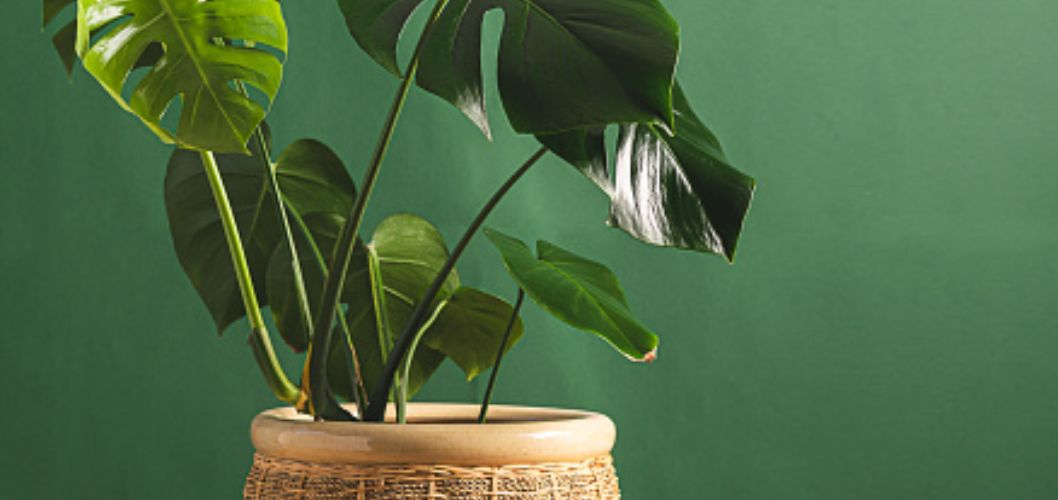Monstera deliciosa, commonly known as the Swiss cheese plant or simply Monstera, has become one of the most popular houseplants in recent years. Known for its striking foliage and easy-to-maintain nature, the Monstera is an excellent choice for both novice and experienced plant enthusiasts. In this article, we will guide you through the essential aspects of caring for a Monstera, ensuring its growth, health, and beauty flourish in your indoor space.
How to care for a monstera
Lighting
Monstera plants thrive in bright, indirect light. Place your Monstera near a window with filtered sunlight, as direct sunlight can scorch its leaves. If your space lacks natural light, fluorescent or grow lights can be used to supplement its lighting needs. Regularly rotate the plant to ensure even exposure to light and prevent it from leaning toward the light source.
Temperature and Humidity
Monstera plants prefer average room temperatures between 65-85°F (18-29°C). They are tropical plants and enjoy high humidity levels. Mist the leaves regularly or place a humidifier nearby to maintain humidity. If the air is too dry, the leaves may develop brown tips or edges. Grouping plants together can create a microclimate that increases humidity.
Watering
Proper watering is crucial for the health of your Monstera. It is important to strike a balance between underwatering and overwatering. Water your Monstera when the top inch (2.5 cm) of soil feels dry to the touch. Ensure that excess water drains well to avoid waterlogged roots, which can lead to root rot. It’s always better to underwater slightly than overwater. Adjust the frequency of watering based on the season and environmental conditions.
Soil and Potting
Monstera plants prefer well-draining soil that retains some moisture. A mix of peat moss, perlite, and a small amount of orchid bark or charcoal works well. Choose a pot with drainage holes to prevent water accumulation. Repot your Monstera every 1-2 years or when the roots start to become pot-bound. Spring is generally the best time for repotting.
Fertilization
To keep your Monstera healthy and encourage growth, fertilize it regularly during the growing season (spring and summer). Use a balanced, water-soluble fertilizer diluted to half strength, and apply it every 2-4 weeks. During the dormant period (fall and winter), reduce fertilization to once a month or stop altogether.
Pruning and Maintenance
Monstera plants are known for their beautiful fenestrated leaves. As the plant matures, it develops more splits and holes. Remove any yellowing or dead leaves promptly to maintain a clean appearance. You can also trim back leggy stems to promote bushier growth. Use clean, sharp pruning shears to avoid damaging the plant.
Support and Training
Monstera plants are natural climbers. Providing a support structure such as a moss pole or trellis allows the plant to grow vertically, enhancing its beauty. Gently tie the stems to the support structure using soft plant ties or twine, avoiding tight knots that could constrict growth.

Types of Monstera
Monstera plants belong to the Araceae family and are known for their distinctive foliage and tropical charm. While the Monstera deliciosa, often referred to as the Swiss cheese plant, is the most well-known and widely cultivated species, there are a few other popular types of Monstera worth exploring. Here are some common types of Monstera plants:
- Monstera deliciosa: Also known as the Swiss cheese plant, this is the most recognizable and popular species of Monstera. It features large, glossy, heart-shaped leaves with characteristic holes and splits. It is a climbing vine that can grow both indoors and outdoors in tropical and subtropical regions.
- Monstera adansonii: This species is commonly referred to as the Swiss cheese vine or Monkey mask plant. It has smaller, more delicate leaves compared to Monstera deliciosa, but they exhibit the same characteristic holes. The leaves have a trailing growth habit, making it an excellent choice for hanging baskets or climbing up trellises.
- Monstera obliqua: Monstera obliqua is often referred to as the “Swiss cheese plant on steroids” due to its incredibly fenestrated leaves. It has extremely delicate, lacy foliage with intricate perforations. However, it is essential to note that true Monstera obliqua is extremely rare and challenging to find. Many plants labeled as Monstera obliqua in the market are actually a closely related species called Monstera adansonii.
- Monstera standleyana: Also known as the Five-Holes Plant or Philodendron Cobra, this species showcases elongated heart-shaped leaves with five pronounced holes. The leaves have a beautiful pattern of dark green color and silvery-white veins, adding a unique touch to your indoor greenery.
- Monstera siltepecana: This species is characterized by its velvety, lance-shaped leaves with silver-green veins. It is often called the Silver Monstera due to its distinct silver shimmer. Monstera siltepecana is a trailing vine that looks stunning when grown in hanging baskets or cascading from shelves.
- Monstera karstenianum: Known as the Peru Monstera or Monstera sp. “Peru,” this species has heart-shaped leaves with elongated tips and intricate perforations. The foliage has a dark green color and a velvety texture. It is a compact and bushy Monstera that can thrive in both indoor and outdoor environments.
Conclusion
Caring for a Monstera is a rewarding experience that brings a touch of lush tropical beauty into your home. By providing the right lighting, temperature, humidity, watering, soil, and regular maintenance, your Monstera will thrive and become a centerpiece of your indoor green space. Enjoy the process of watching your Monstera grow, and remember that each plant has its unique needs, so observe and adjust your care accordingly.
